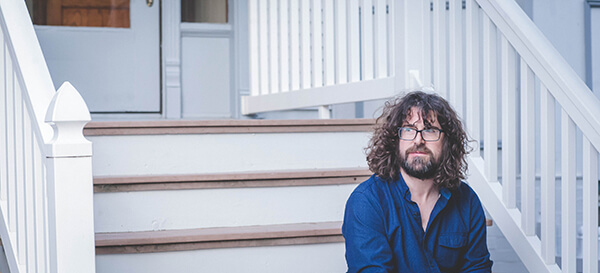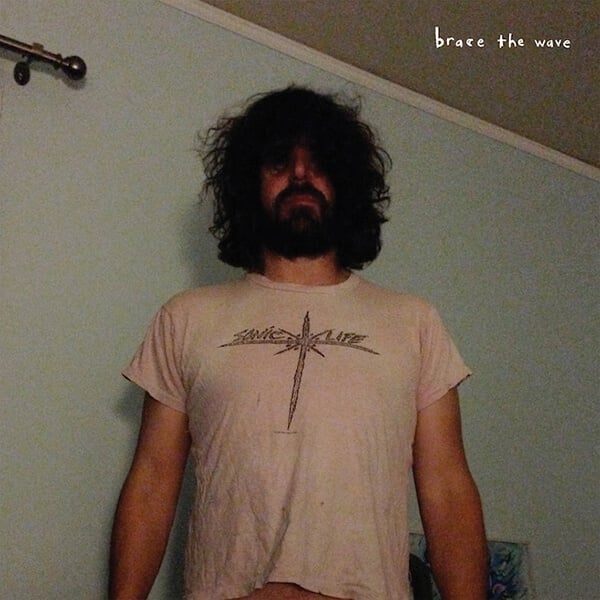Lou Barlow
On The Paradoxical Importance of Well-Recorded Lo-Fi Albums
Lo-fi enthusiasts love to debate the origins of the genre. Was it Bruce Springsteen’s famously home-recorded Nebraska? Or was it Captain Beefheart’s Zappa-produced Trout Mask Replica in 1969? Surely The Kingsmen’s “Louie Louie” or Ike Turner’s “Rocket 88” – arguably the first rock and roll record – meet the aesthetic qualifications. And what do we make of recordings of the early Delta blues singers like Charlie Patton or Blind Lemon Jefferson?
But the true birthplace of the lo-fi, at least in the terms that we think of the genre today, might well be traced to the cassette tapes Lou Barlow sent to his childhood friend as a kid growing up near Amherst, in western Massachusetts.
“We would make cassette letters to each other,” Barlow remembers. “He started a fight with his mom for one of my letters and then I did one with my sister. Then we did prank phone calls, and from there I actually started to write songs for him, really short, kind of obnoxious songs on acoustic guitar. Those were the beginnings of my recordings on cassette, and I got really into it. I loved the way it sounded.”
While Barlow doesn’t command the name recognition of fellow alt-rock pioneers like Sonic Youth’s Thurston Moore or his Dinosaur Jr. bandmate J Mascis, he’s been hugely influential upon a lineage of indie groups that followed him. After forming Dinosaur Jr. in 1984 with Mascis as the primary songwriter, Barlow started his own group, Sebadoh. Along with bands like Guided By Voices and Pavement, Sebadoh popularized the lo-fi aesthetic within the burgeoning underground rock scene—a sound marked by layered guitar soundscapes recorded on inexpensive 4-track tape machines, giving the music a ghostly, falling-apart quality.
In September, Barlow released his third solo LP, Brace The Wave, a record of intimate folk songs recorded using many of the same offbeat techniques and recording processes that date back to his early Sebadoh records, including playing detuned ukulele and baritone guitar.
“I never learned the on-beat approach,” Barlow recalls, after first taking lessons from a local music teacher who taught him, along with an entire class of sixth graders, “Stairway to Heaven” in its entirety. “I learned a lot of really basic ways to touch the guitar, and I was like ‘Wow!’ but I didn’t really learn anything beyond ‘Stairway to Heaven.’ I didn’t learn other people’s songs.”
At the same time an adolescent Barlow was recording cassette letters to his friend, he heard punk rock for the first time. “Music wasn’t really a big part of my life until I heard The Ramones. It reignited my desire to play the guitar because it addressed my skill level. There was a band called the Young Marble Giants who were very stripped down, almost acoustic and incredibly quiet and hushed. It was obviously a do-it-yourself recording. And I was like, ‘That sounds great!’ They didn’t call it lo-fi at the time, but it was not the way records sounded on the radio. I thought, ‘This is something different, something simpler and more elemental that speaks to me directly.’ At that point, I decided, ‘It’s OK for me to make records that sound like shit—because they sound great!’”
While Brace The Wave isn’t a lo-fi album, per se, that stripped down elemental quality is at the heart of its sound. Many of the tracks were tracked entirely live, while others are layered with angular guitar parts that meander in and out of the mix. Percussion is minimal, leaving Barlow’s distorted and often double-tracked vocals front and center. The album was recorded in under a week, and it’s meant to sound that way, its mistakes and sonic inconsistencies reflecting the urgent anxiety of the songwriting.
Just because an album is recorded using lo-fi techniques, however, doesn’t mean it’s not well crafted. “There’s actually a lot of technique that goes into it,” Barlow explains. “You always want to make sure your voice is heard, and texture it with guitar. It’s not a completely dumb process. There are a lot of moves you have to make to make a recording that actually speaks to somebody.”
To help create the record Barlow had in mind, he recorded Brace The Wave with producer Justin Pizzoferrato at his studio in western Massachusetts. Pizzoferrato recorded the past three Dinosaur Jr. albums with Barlow on bass, and since moving back to the area last year, Barlow says it has been a “motivating and real important factor, to be close to him.” Spending his first winter back in Massachusetts also inspired him to get to work, remarking, “Winter somehow, just makes you go, ‘Come on, keep moving, go somewhere, do something right now, keep your blood moving.’”
Barlow has carried that industrious attitude throughout his entire career, which no doubt has contributed to his longevity. In addition to founding Dinosaur Jr. and Sebadoh, he also formed The Folk Implosion in the ’90s with singer-songwriter John Davis, curated the soundtrack for the cult classic film Kids, and has been steadily touring and recording with Dinosaur Jr. since the group reunited in 2005. “When I think of something, I try to act on it. And when I’m done with something, I try to get away from it,” Barlow says.
When asked if it’s any more difficult to sustain a career in music since his early days with Dinosaur Jr., he replies, “It seems about the same. It’s not easy. I’m still going to go out and play shows to like five people. That’s still going to happen. I’m still going to get bad reviews and I am still going to get some good reviews. It’s always been that way,” adding his mindset has always been to “keep going and figure something else out—keep thinking about it and try to stay a step ahead of myself.”
Follow on Twitter @TheLouBarlow
photography by Rachel Enneking

Lou Barlow
Brace The Wave
Standout Track: “Redeemed”
BUY NOW on CD, Tape and Vinyl at http://www.joyfulnoiserecordings.com/products/brace-the-wave
